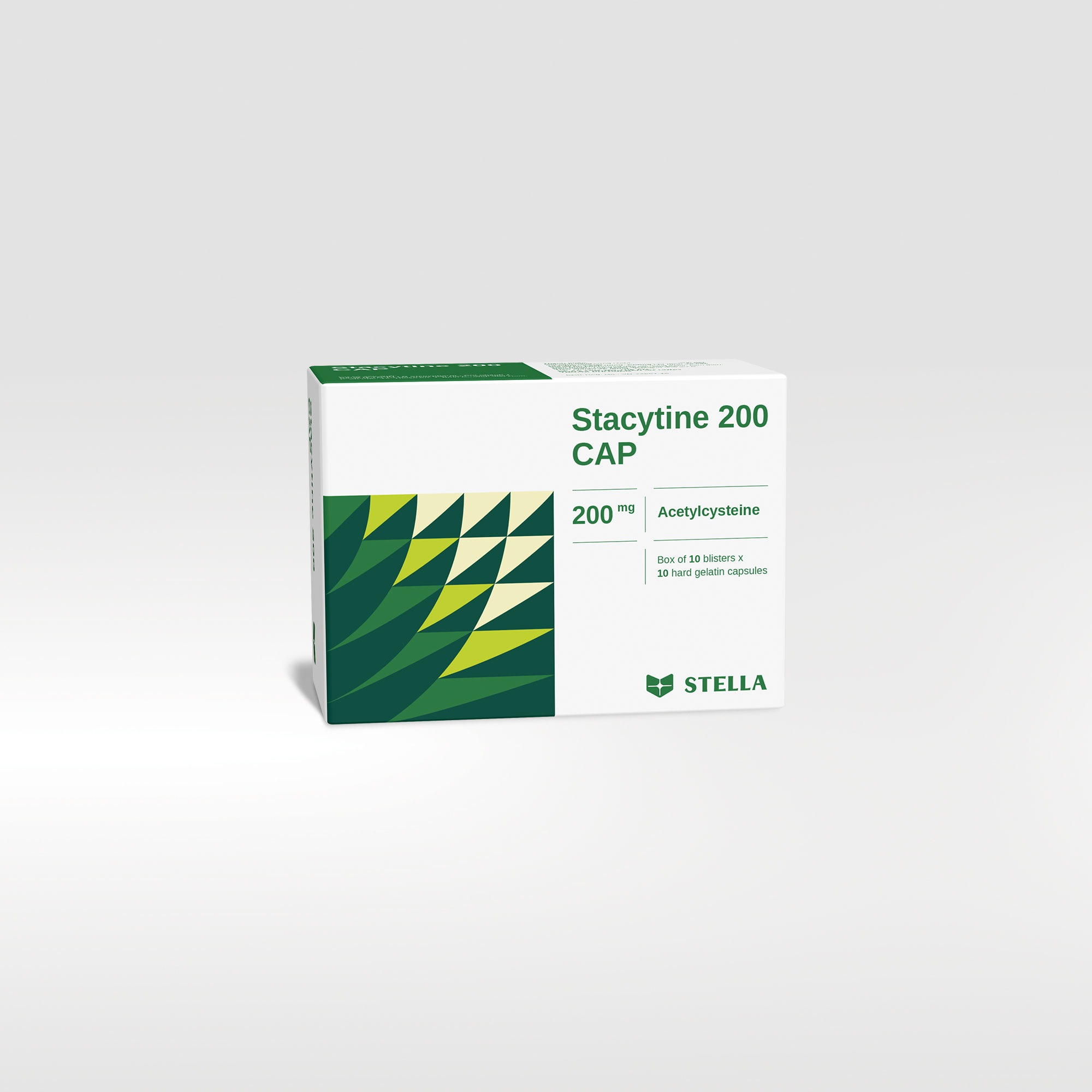Stacytine 200 CAP OTC
Stacytine 200 CAP contains acetylcysteine which reduces the viscosity of pulmonary secretions and facilitates their removal. Acetylcysteine may protect the liver in case of overdose of paracetamol by maintaining or restoring glutathione levels or by acting as an alternate substrate for conjugation with the toxic intermediate metabolite.
| Pack size | Box of 100 capsules (10 blisters x 10 caps. Bottle of 100 caps) |
| Shelf-life | 24 months |
| Composition | Acetylcysteine |
| Dosage forms and strengths | Hard-gelatin capsule: 200 mg |





